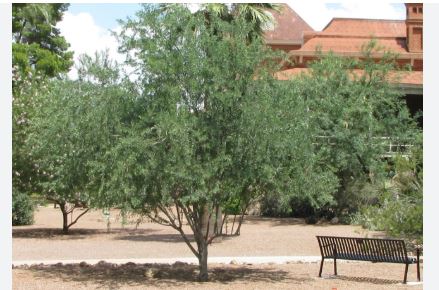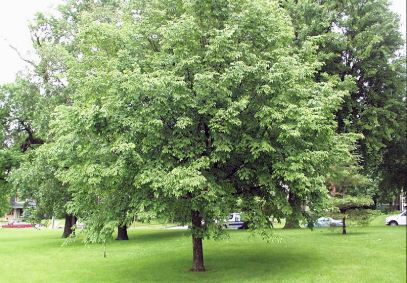
The term “ironwood” refers to various tree species worldwide, valued for their dense, hard wood, often denser than water (approximately 1000 kg/m³ or 62 lb/ft³). It’s not a single species but a common name applied to trees across different genera and regions, typically prized for durability in construction, tools, or crafts.
These trees, scattered across various genera, grow in diverse climates, from arid deserts to humid tropics, showcasing remarkable adaptability. Their slow growth contributes to their durability, making them symbols of resilience in harsh environments. They typically feature tough bark, modest leaves, and inconspicuous flowers, blending strength with understated beauty.
The wood’s hardness makes ironwood prized for crafting tools, furniture, and carvings, resisting wear and rot even in challenging conditions. In their ecosystems, these trees often play vital roles, providing shade, stabilizing soil, or supporting wildlife with seeds or nectar. Some enrich soils through nitrogen fixation, benefiting surrounding plants. Their longevity, often spanning centuries, underscores their ecological and cultural significance.
In landscapes, ironwood trees are valued for their structural presence, offering shade or windbreaks in gardens and parks. Their rugged forms suit naturalistic or low-maintenance designs, thriving with minimal water or care once established. Compact species work well in small spaces, while larger ones anchor open areas. Their understated blooms and foliage add subtle seasonal interest without overwhelming.
Cultivating ironwood requires patience due to slow growth, but their low upkeep rewards long-term investment. They thrive in well-drained soils, often tolerating drought, heat, or poor nutrients. In colder regions, container growth allows overwintering indoors. Their toughness makes them ideal for sustainable landscaping, contributing beauty and function for generations with proper care.

Ironwood Trees
Desert Ironwood (Olneya tesota)
- Botanical Classification: Fabaceae family, genus Olneya, monotypic species.
- Identifying Characteristics: A multi-stemmed shrub or tree, 15–30 ft (4.5–9 m) tall, with gray-green pinnate leaves, purple-pink pea-like flowers in spring, and brown seed pods. Its dark gray, thorny bark and dense wood sink in water.
- Native Area & Habitat: Sonoran Desert (southwestern Arizona, southeastern California, northwestern Mexico), thriving in sandy washes and rocky slopes below 3,000 ft (900 m).
- USDA Zones: 8b–11, tolerating 15°F to 110°F (-9°C to 43°C).
- Uses: A keystone species providing shade and food (edible seeds) for wildlife. Wood is used for carvings, tool handles, and high-BTU firewood. Its canopy nurses cacti and shrubs, enhancing desert biodiversity.
Eastern Hophornbeam (Ostrya virginiana)
- Botanical Classification: Betulaceae family, genus Ostrya.
- Identifying Characteristics: A small tree, 20–40 ft (6–12 m), with shaggy, gray-brown bark peeling in strips, ovate leaves with doubly serrated margins, and hop-like seed clusters. Male catkins persist through winter.
- Native Area & Habitat: Eastern U.S., southern Ontario to Honduras, in upland forests, hillsides, and stream edges, shade-tolerant.
- USDA Zones: 3–9, hardy from -20°F to 90°F (-29°C to 32°C).
- Uses: Hard wood for tool handles, fence posts, and fuel. Ornamental for its bark and fall yellow foliage. Wildlife eats catkins and nutlets.
American Hornbeam (Carpinus caroliniana)
- Botanical Classification: Betulaceae family, genus Carpinus.
- Identifying Characteristics: A small tree, 20–35 ft (6–10 m), with smooth, gray, muscle-like bark, serrated ovate leaves, and small nutlets in leafy bracts. Fall colors range from yellow to red.
- Native Area & Habitat: Eastern North America, in moist forests, floodplains, and understory woodlands.
- USDA Zones: 3–9, tolerating -20°F to 85°F (-29°C to 29°C).
- Uses: Wood for levers and mallets. Ornamental for shaded landscapes. Native Americans used bark medicinally for toothaches and hemorrhages.
Honey Mesquite (Prosopis glandulosa)
- Botanical Classification: Fabaceae family, genus Prosopis.
- Identifying Characteristics: A shrub or tree, 10–30 ft (3–9 m), with feathery bipinnate leaves, yellow-green flower spikes, and long tan pods. Thorny branches and rough, dark bark.
- Native Area & Habitat: Southwestern U.S., northern Mexico, in deserts, grasslands, and riverbanks, drought-tolerant.
- USDA Zones: 6–9, hardy from 0°F to 100°F (-18°C to 38°C).
- Uses: Wood for furniture, flooring, and barbecue fuel due to its smoky flavor. Pods are edible for livestock and humans (ground into flour). Stabilizes soil in arid regions.
Horsetail Casuarina (Casuarina equisetifolia)
- Botanical Classification: Casuarinaceae family, genus Casuarina.
- Identifying Characteristics: A tree, 20–100 ft (6–30 m), with needle-like branchlets resembling pine needles, small cone-like fruits, and scaly reddish-brown bark.
- Native Area & Habitat: Southeast Asia to Australia, in coastal dunes, beaches, and sandy soils, salt-tolerant.
- USDA Zones: 9–11, tolerating 20°F to 95°F (-6°C to 35°C).
- Uses: Windbreaks and erosion control in coastal areas. Wood for construction and charcoal. Nitrogen-fixing roots enrich soil.
Ulin (Eusideroxylon zwageri)
- Botanical Classification: Lauraceae family, genus Eusideroxylon.
- Identifying Characteristics: A tall tree, up to 165 ft (50 m), with glossy dark green leaves, small white flowers, and straight trunks with dark brown bark. Wood is dark and heavy.
- Native Area & Habitat: Indonesia, Malaysia, in lowland rainforests and swampy areas.
- USDA Zones: 10–12, requiring 50°F to 90°F (10°C to 32°C).
- Uses: Timber for bridges, boats, and furniture due to rot resistance. Medicinally used by locals for skin ailments. Overharvested, now protected in some areas.
Lignum Vitae (Guaiacum officinale)
- Botanical Classification: Zygophyllaceae family, genus Guaiacum.
- Identifying Characteristics: A small tree, 10–30 ft (3–9 m), with glossy pinnate leaves, blue-purple flowers, and heart-shaped pods. Dark, oily wood sinks in water.
- Native Area & Habitat: Caribbean, northern South America, in dry coastal forests and scrublands.
- USDA Zones: 10–12, tolerating 25°F to 95°F (-4°C to 35°C).
- Uses: Wood for ship propeller shafts and tool handles due to self-lubricating oils. Resin used medicinally for arthritis. Ornamental in tropical gardens.
Argentine Lignum Vitae (Bulnesia sarmientoi)
- Botanical Classification: Zygophyllaceae family, genus Bulnesia.
- Identifying Characteristics: A tree, 15–50 ft (4.5–15 m), with small pinnate leaves, yellow flowers, and winged seeds. Dark brown, resinous wood is fragrant.
- Native Area & Habitat: Argentina, Paraguay, in dry Chaco forests and savannas.
- USDA Zones: 9–11, tolerating 20°F to 100°F (-6°C to 38°C).
- Uses: Wood for carvings, flooring, and perfume extraction (guaiac oil). Ornamental for its blooms. Overexploited, now regulated.
Morocco Ironwood (Argania spinosa)
- Botanical Classification: Sapotaceae family, genus Argania.
- Identifying Characteristics: A thorny tree, 15–30 ft (4.5–9 m), with gnarled trunks, small leathery leaves, and yellow-green flowers. Produces edible nut-like fruit.
- Native Area & Habitat: Southwestern Morocco, in semi-arid plains and hills, drought-resistant.
- USDA Zones: 8–10, tolerating 15°F to 105°F (-9°C to 40°C).
- Uses: Wood for fuel and crafts. Argan oil from nuts used in cosmetics and cooking. Stabilizes desert soils and supports goat grazing.
Ceylon Ironwood (Mesua ferrea)
- Botanical Classification: Calophyllaceae family, genus Mesua.
- Identifying Characteristics: A tree, 30–100 ft (9–30 m), with glossy lanceolate leaves, fragrant white flowers with yellow centers, and small woody fruits. Reddish-brown wood.
- Native Area & Habitat: Southern Asia (India, Sri Lanka, Southeast Asia), in wet evergreen forests.
- USDA Zones: 10–12, requiring 50°F to 90°F (10°C to 32°C).
- Uses: Timber for railway ties and furniture. Flowers used in perfumes and religious ceremonies. Medicinally used for skin and digestive issues.
West African Ironwood (Lophira alata)
- Botanical Classification: Ochnaceae family, genus Lophira.
- Identifier: A tall tree, 100–180 ft (30–55 m), with long, leathery leaves, white flowers, and conical fruits. Reddish-brown wood is termite-resistant.
- Native Area & Habitat: Western and Central Africa, in savannas and moist forests.
- USDA Zones: 11–12, requiring 60°F to 95°F (16°C to 35°C).
- Uses: Timber for heavy construction and docks. Bark and seeds used in traditional medicine for wounds and fever. Supports forest ecosystems.
Catalina Ironwood (Lyonothamnus floribundus)
- Botanical Classification: Rosaceae family, genus Lyonothamnus.
- Identifying Characteristics: A tree, 20–50 ft (6–15 m), with evergreen, fern-like leaves, white flower clusters, and peeling red-brown bark.
- Native Area & Habitat: Channel Islands, California, in coastal canyons and cliffs, fog-dependent.
- USDA Zones: 8–10, tolerating 15°F to 85°F (-9°C to 29°C).
- Uses: Ornamental for its foliage and flowers in Mediterranean gardens. Wood occasionally used for small crafts. Rare in cultivation due to specific needs.
Cooktown Ironwood (Erythrophleum chlorostachys)
- Botanical Classification: Fabaceae family, genus Erythrophleum.
- Identifying Characteristics: A tree, 20–60 ft (6–18 m), with bipinnate leaves, yellow-green flowers, and flat pods. Dark, heavy wood is toxic.
- Native Area & Habitat: Northern Australia, in savannas and open woodlands, fire-tolerant.
- USDA Zones: 10–12, tolerating 40°F to 100°F (4°C to 38°C).
- Uses: Timber for fence posts and tools, though toxic sap limits handling. Aboriginal uses include poison for hunting. Stabilizes fire-prone soils.
Black Ironwood (Krugiodendron ferreum)
- Botanical Classification: Rhamnaceae family, genus Krugiodendron.
- Identifying Characteristics: A small tree, 10–30 ft (3–9 m), with glossy oval leaves, tiny greenish flowers, and black berries. Dense, dark wood.
- Native Area & Habitat: Caribbean, southern Florida, Central America, in dry forests and coastal hammocks.
- USDA Zones: 10–11, tolerating 25°F to 90°F (-4°C to 32°C).
- Uses: Wood for carvings and tool handles. Ornamental for compact size and shiny foliage. Berries feed birds.
South African Ironwood (Olea capensis)
- Botanical Classification: Oleaceae family, genus Olea.
- Identifying Characteristics: A tree, 30–100 ft (9–30 m), with lanceolate leaves, small white flowers, and purple drupes. Very dense, dark wood.
- Native Area & Habitat: Southern and eastern Africa, in forests and savannas, shade-tolerant.
- USDA Zones: 9–11, tolerating 20°F to 95°F (-6°C to 35°C).
- Uses: Wood for carvings and furniture, claimed as one of the heaviest (specific gravity 1.49). Fruit edible for wildlife. Ornamental in warm climates.
Queensland Red Ironwood (Backhousia myrtifolia)
- Botanical Classification: Myrtaceae family, genus Backhousia.
- Identifying Characteristics: A small tree, 10–25 ft (3–7.5 m), with glossy myrtle-like leaves, creamy flower clusters, and small capsules. Hard, reddish wood.
- Native Area & Habitat: Eastern Australia, in rainforests and wet woodlands, moisture-loving.
- USDA Zones: 9–11, tolerating 20°F to 90°F (-6°C to 32°C).
- Uses: Timber for cabinetry and crafts. Leaves used for herbal teas or spices. Ornamental for its foliage and flowers.